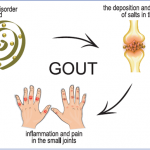Researchers often use a composite event-time endpoint—such as time to the first of death, hospitalization, or cardiovascular event—in cardiovascular trials, but such analyses suffer from the complexities of competing risks and components with varying importance, he added. Using an ordinal categorical variable based on benefits and harms might have avoided complexities associated with competing risk from death and informative censoring in the NEJM paper, he said.
Dr. Evans also presented a multidimensional approach to trial design, monitoring, and analyses that involves thinking about efficacy and safety as coprimary endpoints. For example, a trial may be designed to evaluate noninferiority with respect to efficacy and superiority with respect to safety, or vise versa, he suggested.
Better Risk–Benefit Analysis
Rheumatologists and other physicians often find it difficult to discern which drugs are safest for their patients. That’s because published drug studies measure harm quite differently, said Steven M. Snapinn, PhD, vice president for Global Biostatistical Science for Amgen, Inc. Some look at absolute and relative measures of harm, others look at differences relative to controls, while others don’t have controls. “Is there a right approach? Can you tell which harm is of a larger magnitude?” he asked.
Comparisons of benefit and harms should involve absolute measures and account for follow-up duration, he suggested. But when a study doesn’t consider time, it could look at event rate among treatment and control arms, and determine the increase in absolute risk, he suggested.
While this approach measures public health impact, it presents challenges. The approach can minimize the magnitude of harm and makes taking into account follow-up duration challenging, especially if hazard rates aren’t constant, or proportionate over time in the two arms, he added.
Assessing the clinical meaningfulness of benefits and degree of harm is also key, Dr. Snapinn maintained. He identified hazard ratio as the most appropriate measure for assessing clinical meaningfulness of benefit and absolute risk increase as a consistent measure for harm. For risk–benefit assessment, Dr. Snapinn recommended comparison of absolute risk reduction, or efficacy, to determine benefit and increase of such risk to determine harm.
Assessments must be based on rates, not proportions, while interpretation of study data should incorporate judgment regarding relative importance of efficacy and safety endpoints, Dr. Snapinn added.
He noted, however, that this model carries some limitations. It doesn’t account for competing risks, and results may not hold for all survival distributions.
Comparative Effectiveness Research
Meanwhile, the Affordable Care Act emphasizes a focus on determining how well drugs work for particular types of patients through CER, which assesses the benefits and harms of interventions, highlighting comparisons and outcomes that matter to patients; considers individual preferences and autonomy; and includes a wide variety of settings and diverse participants. CER addresses burden to individuals and availability of services, technology, and personnel.
